Samsung Galaxy Chromebook Plus review
Is this the fanciest Chromebook money can buy?
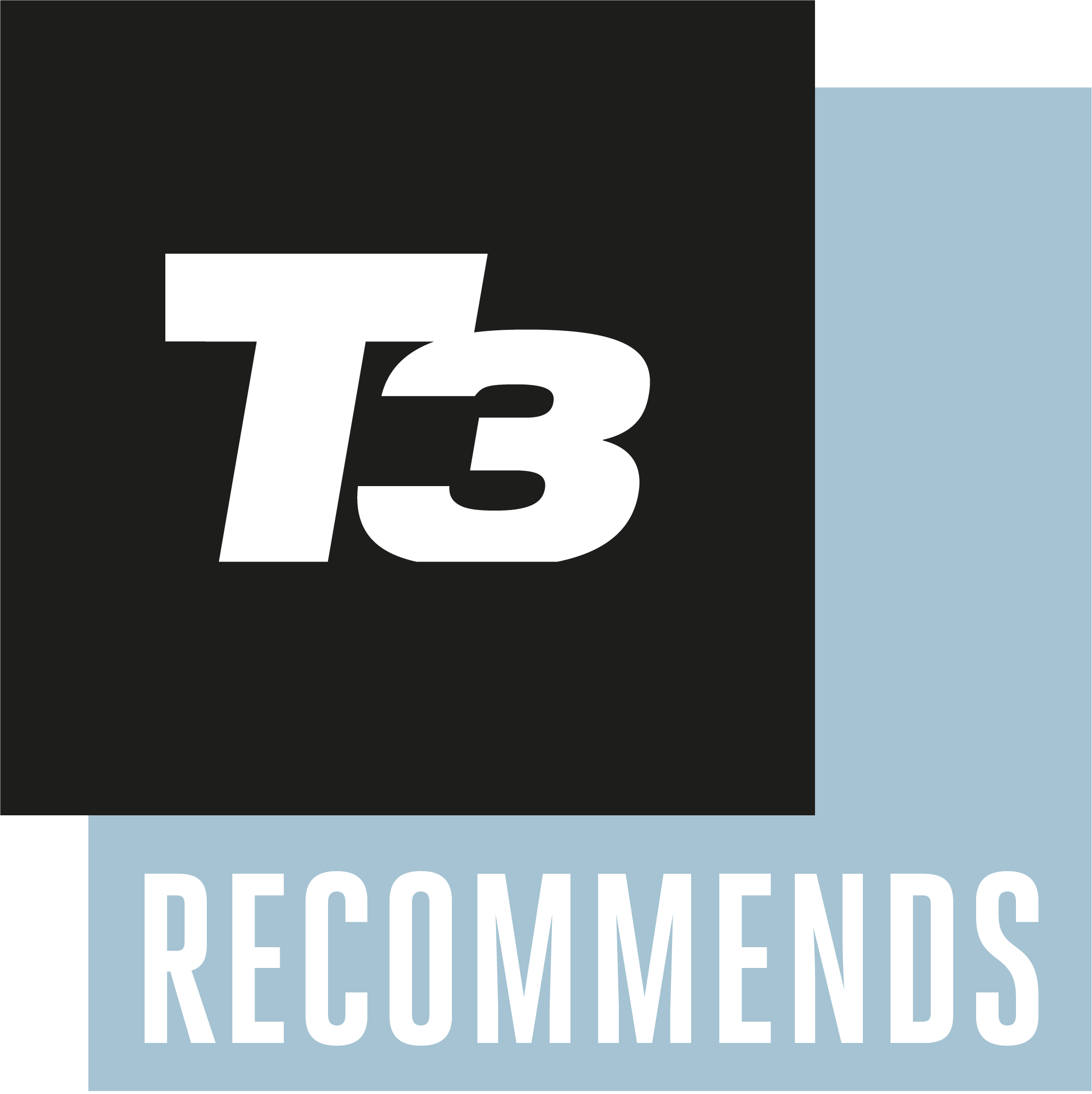
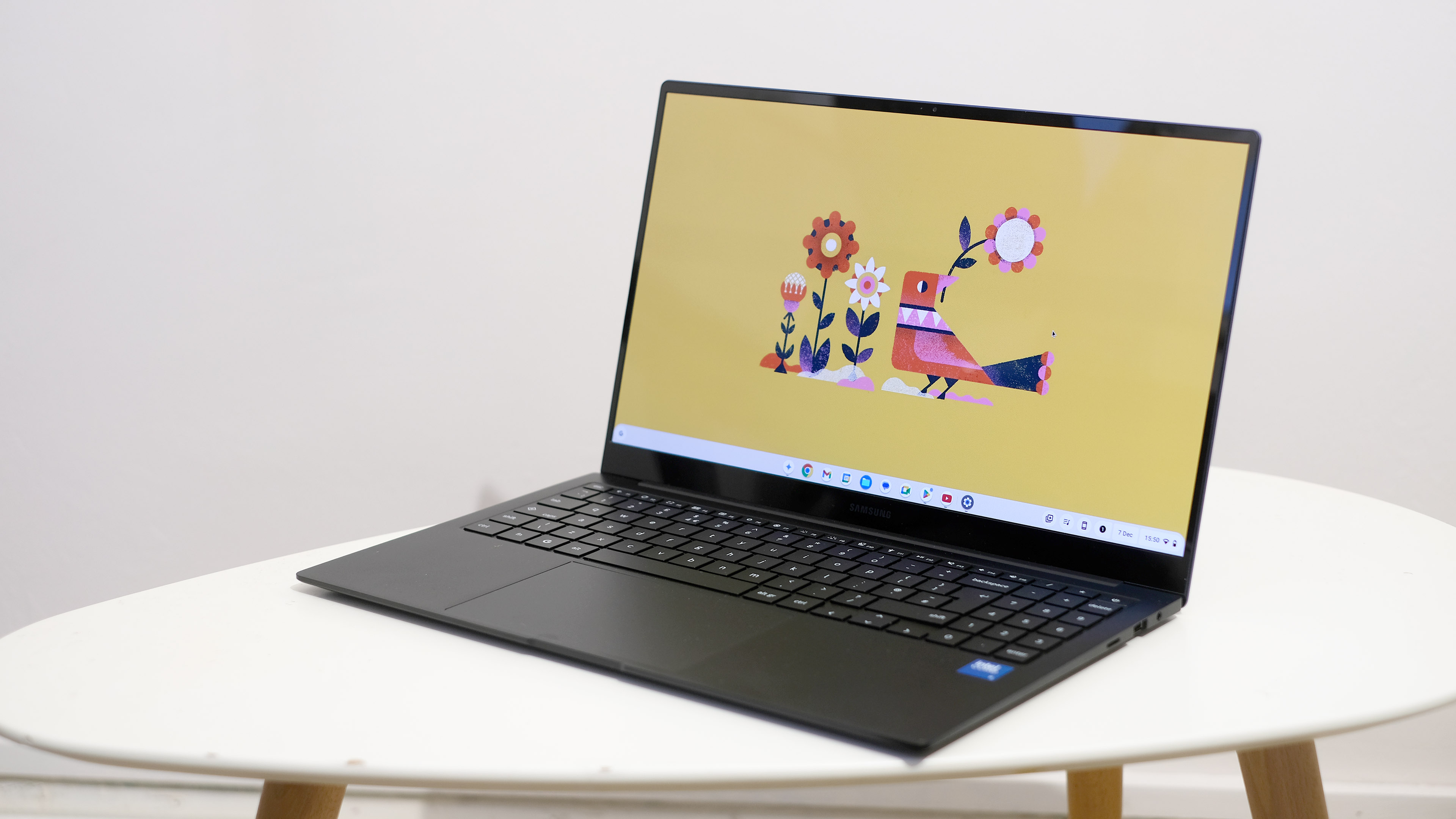
Samsung's Galaxy Chromebook Plus is one of the slickest Chromebooks around and is wonderfully light. The case for a Chrome OS PC this pricey is getting tougher, though, but with discounts it's easily among one of the best models you can buy.
-
+
More powerful than the average Chromebook
-
+
Sleek, grown-up design
-
+
Very low weight
-
-
Expensive for a Chromebook
-
-
OLEDs of this pixel density look fuzzy
-
-
Bright, clicky touchpad feels cheap, despite glass surface
Why you can trust T3

A lot of the best Chromebooks gun so hard for approachability and friendliness, they wouldn’t look out of place with a couple of googly eyes stuck on the lid. That is not the Samsung Galaxy Chromebook Plus style at all.
This is a slick and stylish Chromebook. It means business, and pushes at the borders of how much we think people should consider spending on a Chromebook today. But that also gets you sleek design, an OLED screen, and higher-than-most specs.
Is it worth the cash? Only if you’ll truly value its very low weight and don’t mind the limits on how serious a Chromebook’s productivity apps can get. It’s not that far off being an Android laptop, but it sure can handle the basics with style.
Price & Availability
Google announced the Chromebook Plus concept in late 2023. The Samsung Galaxy Chromebook Plus came a few waves after that, released in October 2024.
At launch it cost £749 in the UK ($999 in the US, AU$1499 in Australia), making it among the most expensive Chromebooks to date, let alone of the current moment. That nets you 8GB RAM, a 256GB SSD and low voltage Intel Core i5 processor.
This is a lower spec than you might get from a good-value Windows laptop selling for similar money, if not a luxury design one. Samsung clearly has some confidence in what it's serving up with the Galaxy Chromebook Plus, though.
Design
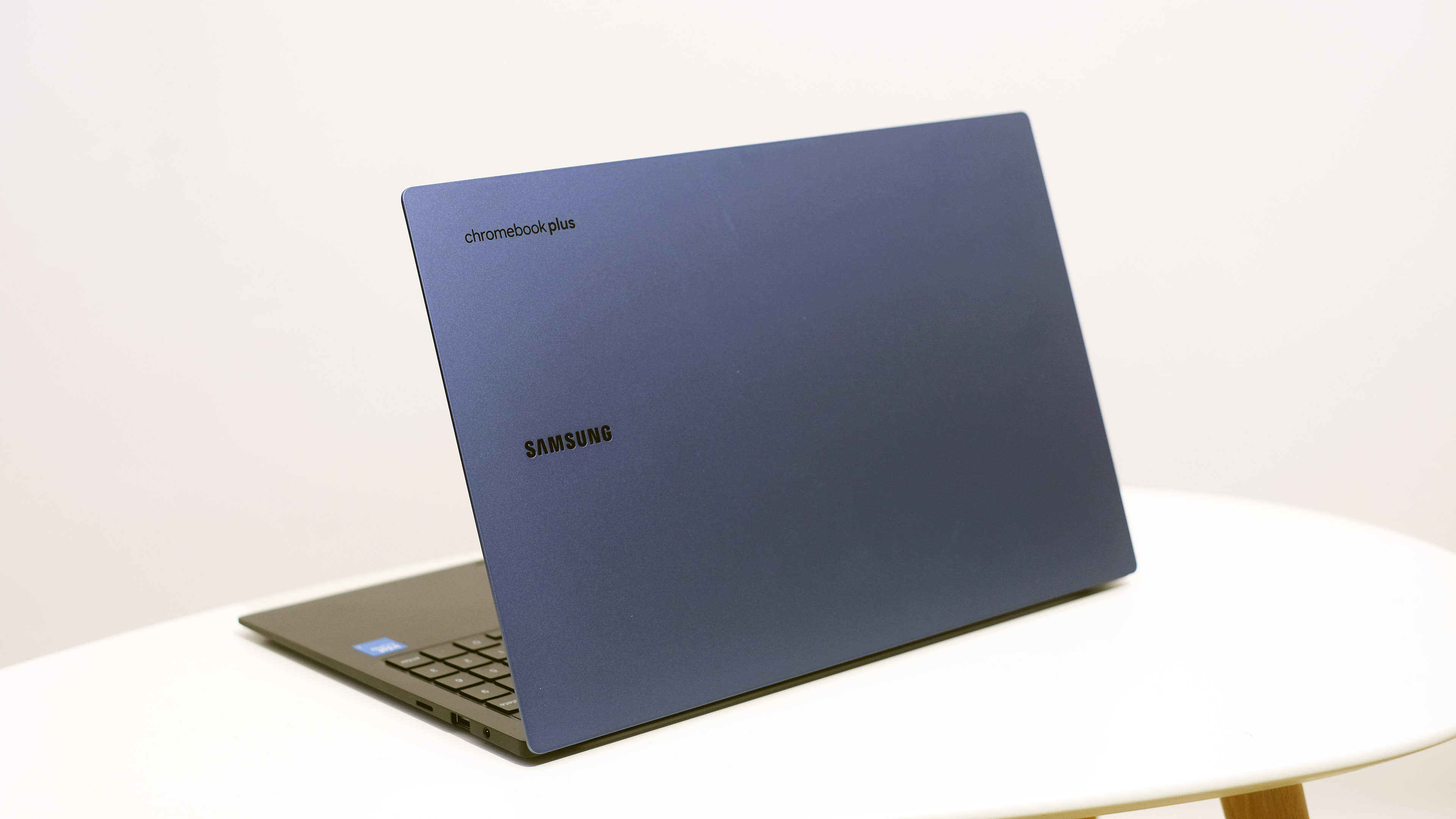
The Samsung Galaxy Chromebook Plus could slip unnoticed into a family photo of Samsung’s Windows-based laptops. All the classic Samsung Galaxy traits are there, from the sharp-squared keyboard keys to the assured minimalism of the generally stark design.
Get all the latest news, reviews, deals and buying guides on gorgeous tech, home and active products from the T3 experts
Screen borders are slender, and there’s no attempt to make the Samsung Galaxy Chromebook Plus appear cute or overly rounded – as seen in some Chromebooks.
The actual important stuff plays out in the laptop’s dimensions. A Samsung Galaxy Chromebook Plus weights just 1.17kg and is only 11.8mm thick. You’ll appreciate these when you start carting the thing around town in a rucksack rather than as you work, though, as it’s no tiny laptop – a 15.6-inch screen makes sure of that.
It’s half the weight and half the thickness of a classic 15.6-inch productivity laptop. Samsung hasn’t compromised too much in the basics to lower the weight either.
The Samsung Galaxy Chromebook Plus feels a bit more expensive than the base Galaxy Book 4, and the panels are mostly fairly stiff. There is a bit of flex to the screen, but that’s because there’s no glass screen top layer to stiffen everything up. Sub 1.2kg weight doesn't come for free.
Still, the Samsung Galaxy Chromebook Plus is a nice-looking and feeling laptop, whose outer panels are metal. The inner part has a slightly textured matte plastic finish, which feels great, and notably not cheap. Result!
Display
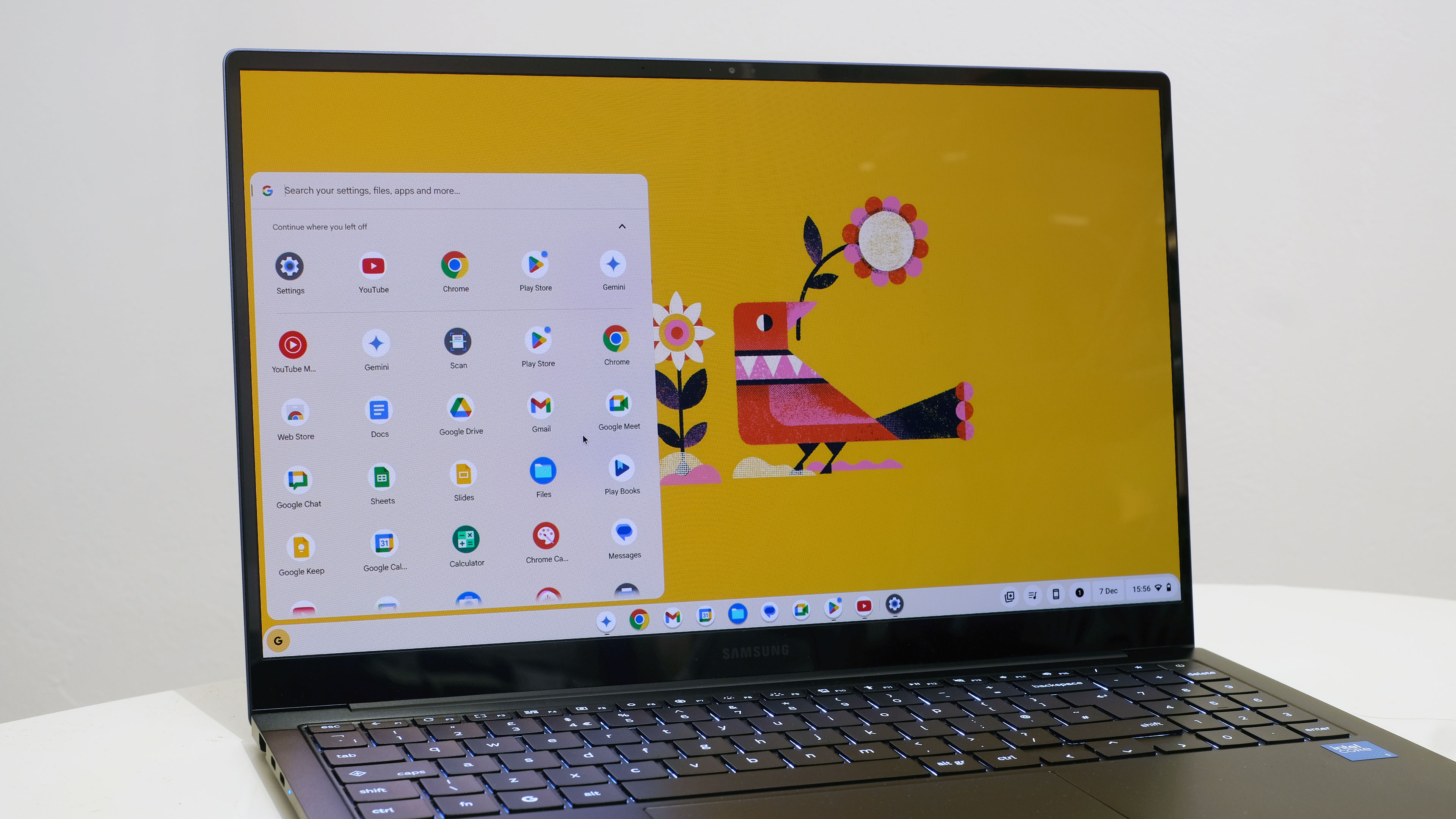
The Samsung Galaxy Chromebook Plus gets a lot of adulation for its screen, mostly because this is a big OLED, which guarantees you better contrast and punch than any rival LCD.
My lukewarm take is these large, but not that high-res, OLEDs don’t look all that great thanks to the lower pixel uniformity of OLED versus LCD.
When using a word processor or a similar app with lots of information packed into a screen, an LCD might actually look better at times. There’s a certain 'fuzziness' to the Galaxy Chromebook Plus compared with a real high-res laptop.
The refresh rate is a standard 60Hz too, so nothing special.
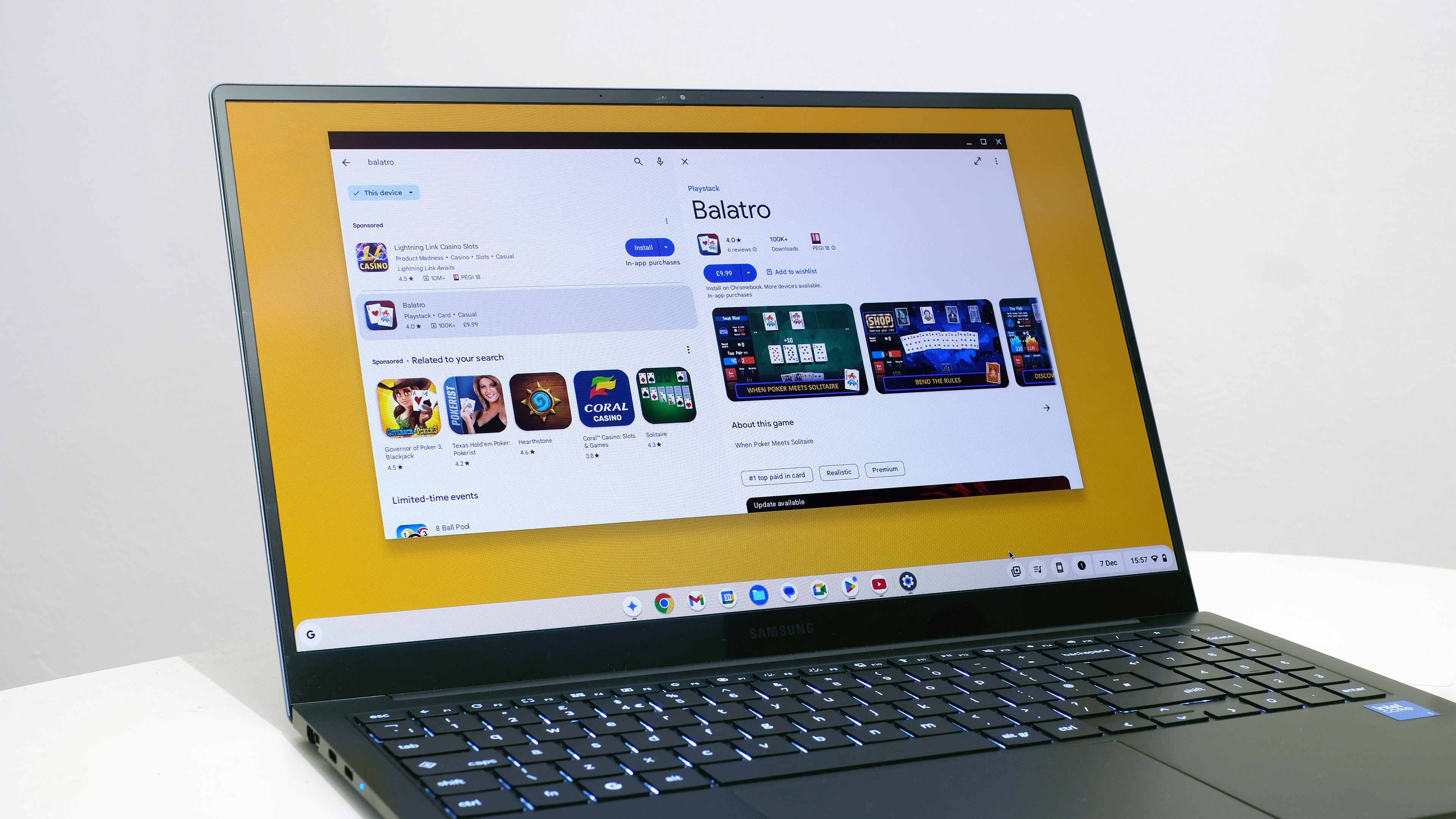
For late-night movies, though, the Samsung Galaxy Chromebook Plus will decimate any LCD rival, letting the black bars of 21:9 films sink into oblivion thanks to those emissive OLED pixels.
Other factors are largely the norm for an OLED screen. You get vibrant colour and solid but not eyeball-braising brightness.
Samsung also pulls a clever trick with the screen surround. It’s a raised plastic bezel but you could easily believe this is a full flat screen as it’s so slim and glossy.
The Galaxy Chromebook Plus doesn’t have a proper flat display because the top screen surface is plastic, not glass, as mentioned earlier.
Part of this is no doubt down to budget constraints, but also helps to keep the weight low.
Keyboard & Touchpad
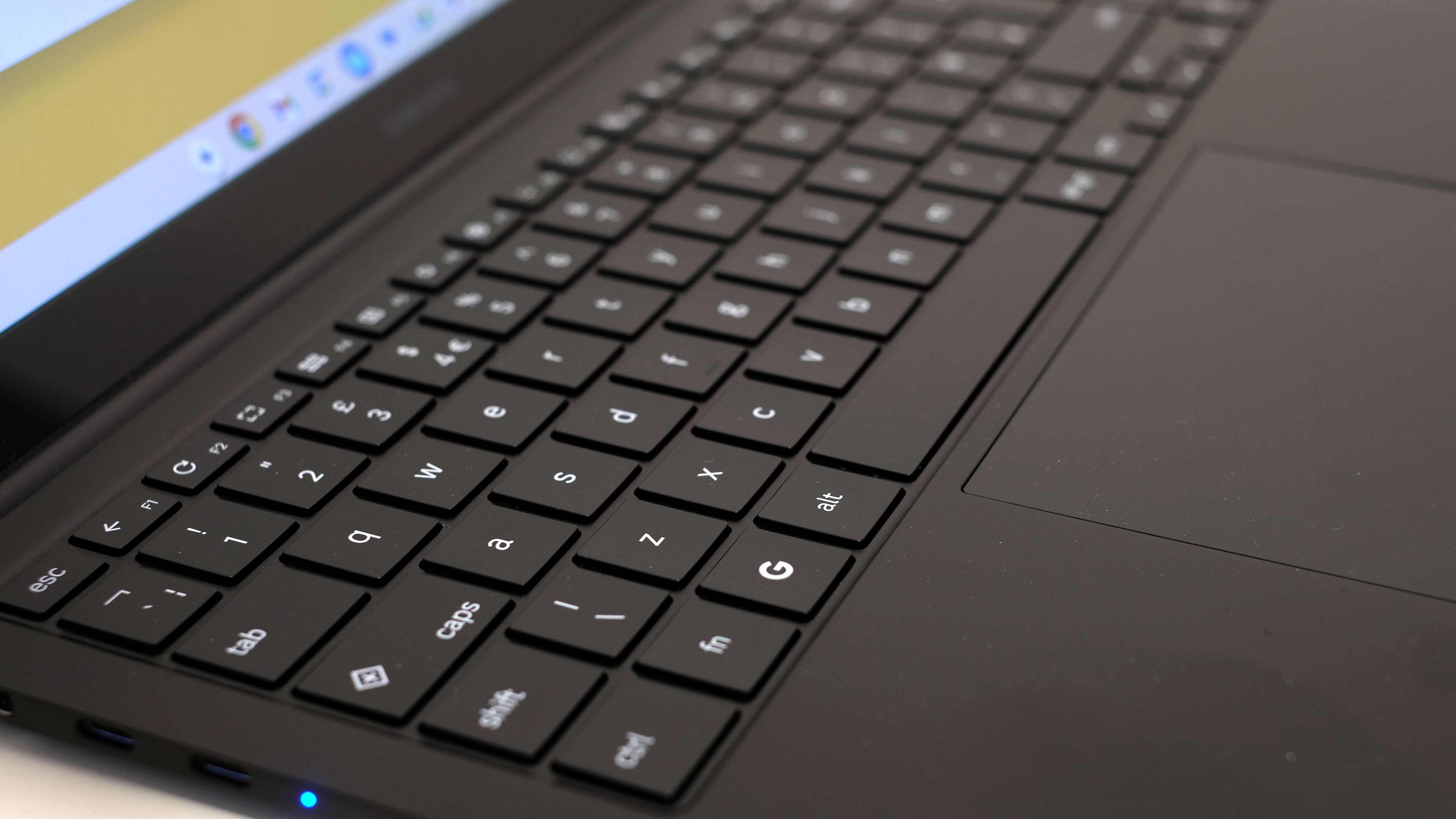
That Samsung brings the style of its Windows PCs to the Galaxy Chromebook Plus is a good thing. Its sharing of the keyboard and touchpad style is a little more contentious.
This Chromebook has a slimline keyboard, which doesn’t provide the most feedback as you type. It does feel like a good-quality set of keys, though, and there’s a backlight too, for typing away in the dark.
There’s a NUM pad too. I’m not a fan of these, as I find they can knock your typing position too far off-centre, but the effect here isn't too bad. Typing is quiet too. It may be a shallow keyboard – not a fit for all tastes – but it’s not a cheap one.
Samsung has also not cheaped out on the touchpad. The Galaxy Chromebook Plus has a proper textured glass pad, not all that different to the ones on Samsung’s most expensive style laptops.
I have the same complaint about this as I do those keys, though. The clicker, which is a mechanical design, is quite high-pitch and 'clicky'. It feels thin as a result, where the best touchpads have more of a refined or sophisticated character to them.
Given how well Samsung does in almost all other areas of laptop design, it’s kinda odd it’s still behind in this area.
Performance
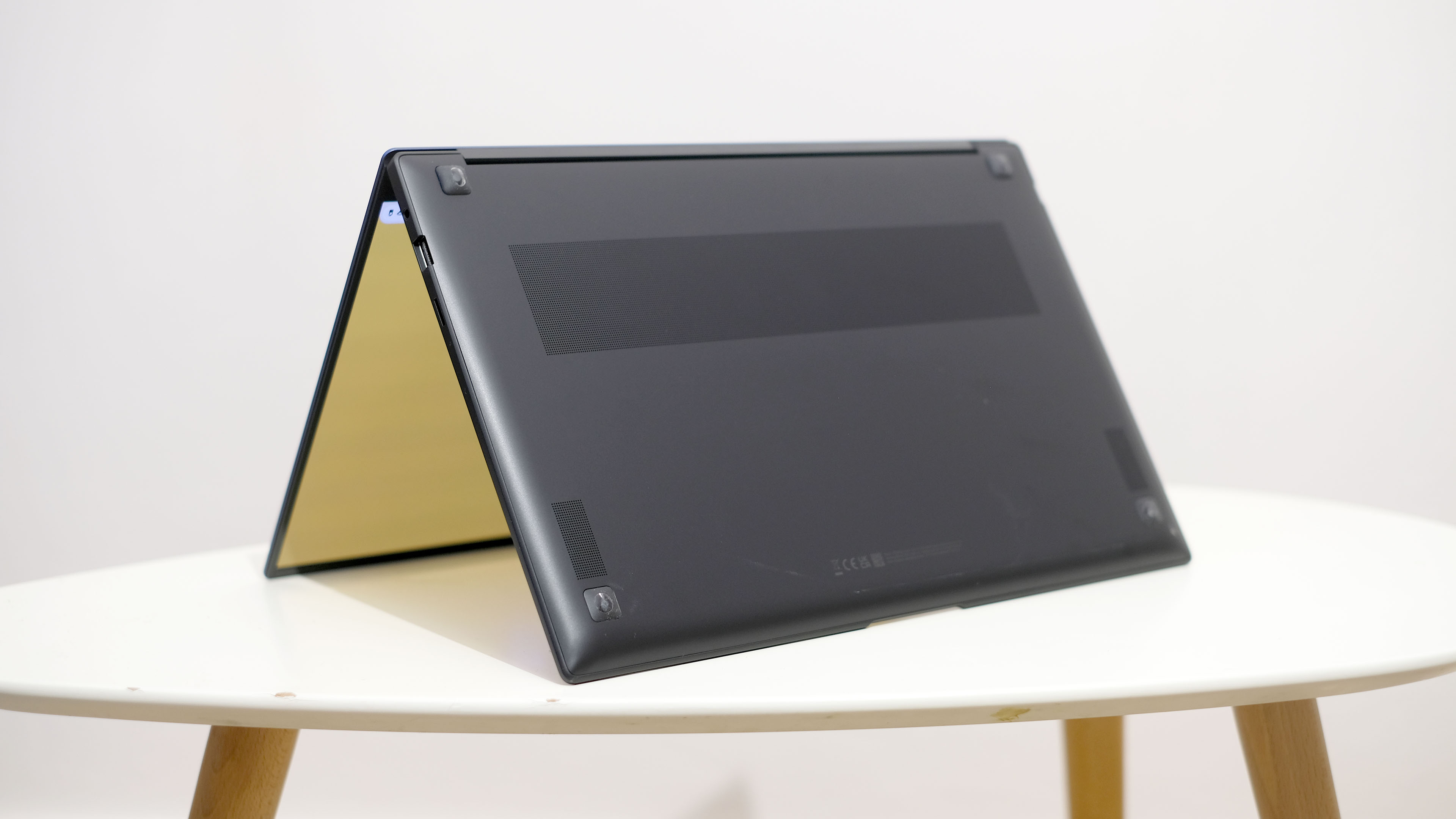
The Samsung Galaxy Chromebook Plus is one of the more powerful Chomebooks to date. It has an Intel Core i5 processor, 8GB RAM and 256GB of storage, just like a solid mid-tier Windows PC.
This isn’t true high-performance hardware because the chipset is part of Intel’s low-power “U” series, which doesn’t have anything like the graphics power of Intel’s best.
There’s a good argument a laptop like this isn’t the right place for such power, though, because Chromebooks like the Galaxy Chromebook Plus predominantly run Android apps, like you'd find in the best Android phones. And they often don’t do the job as well as tablets or phones.
You can run a version of Photoshop on this Chromebook, sure. But it’s not close to the one seen on Windows, as used by countless industry professionals.
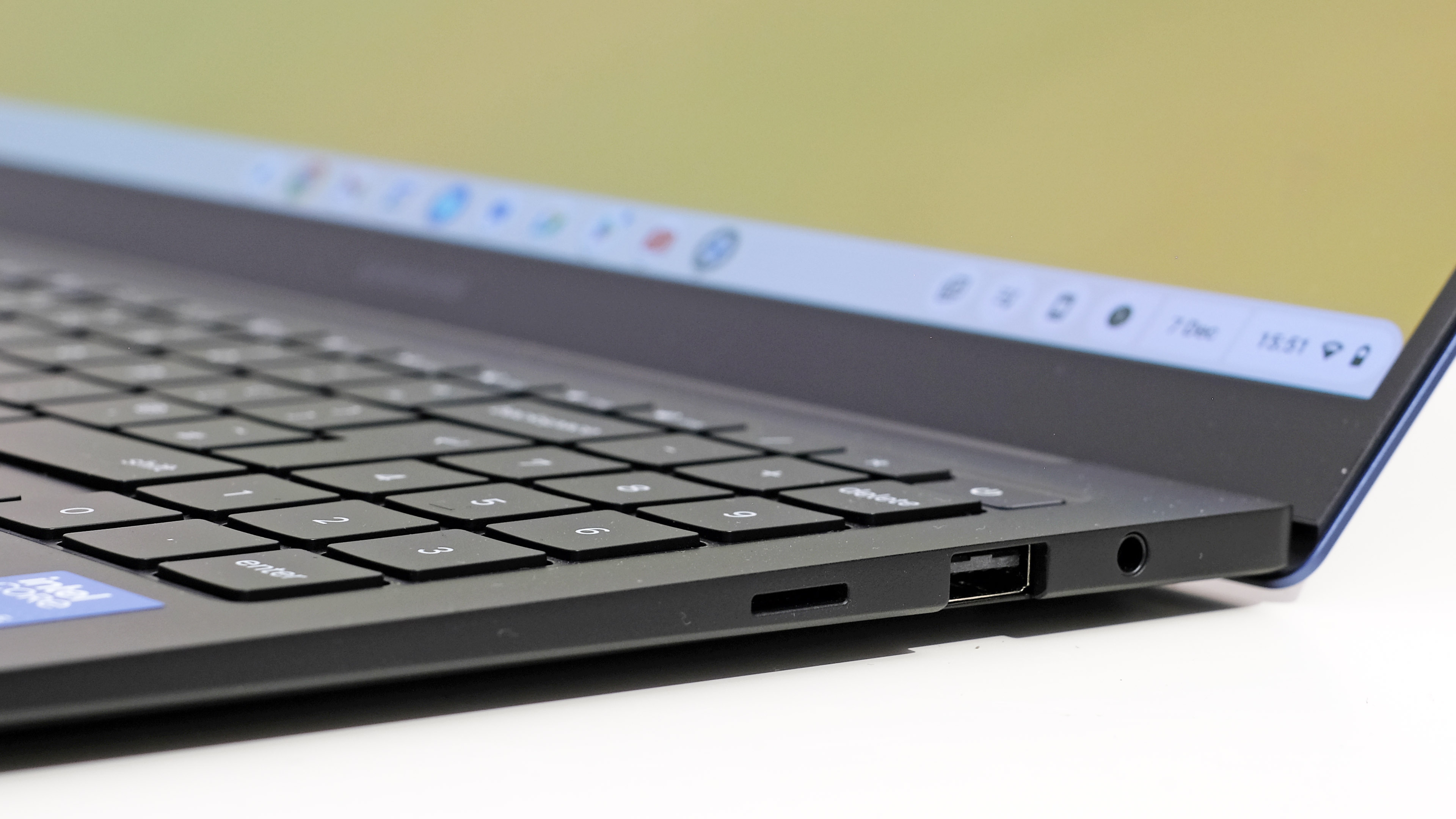
There is one very cool skill the Samsung Galaxy Chromebook Plus has that most other Chromebooks lack, though: it can run Steam, and install any games you like.
I’ve even tried Cyberpunk 2077, although it’s really far beyond the capabilities of this Chromebook. While some of the latest laptops with plain old integrated graphics can hack it just fine, this Galaxy's processor only has Intel Xe graphics rather than the newer Intel Arc kind.
As a result, even Skyrim Special Edition needs a good fiddling with to get running at a decent frame rate. Still, having Steam amps up the fun potential of a Chromebook massively. Only the most powerful Chromebooks with Intel Core or Ryzen processors are allowed in.
One other proposed selling point of these more punchy Chromebook Plus laptops is they are primed and ready for Google’s Gemini AI.
It’s a little less exciting than it sounds, though, as all the key feats of AI – like cleaning up your spotty prose – requires an internet connection. The Samsung Galaxy Chromebook Plus does have a Quick Insert button that brings up a menu for Gemini quick access, but it’s also basically just a laptop search pop-up. This stuff sure isn’t worth upgrading your laptop for.
Battery Life
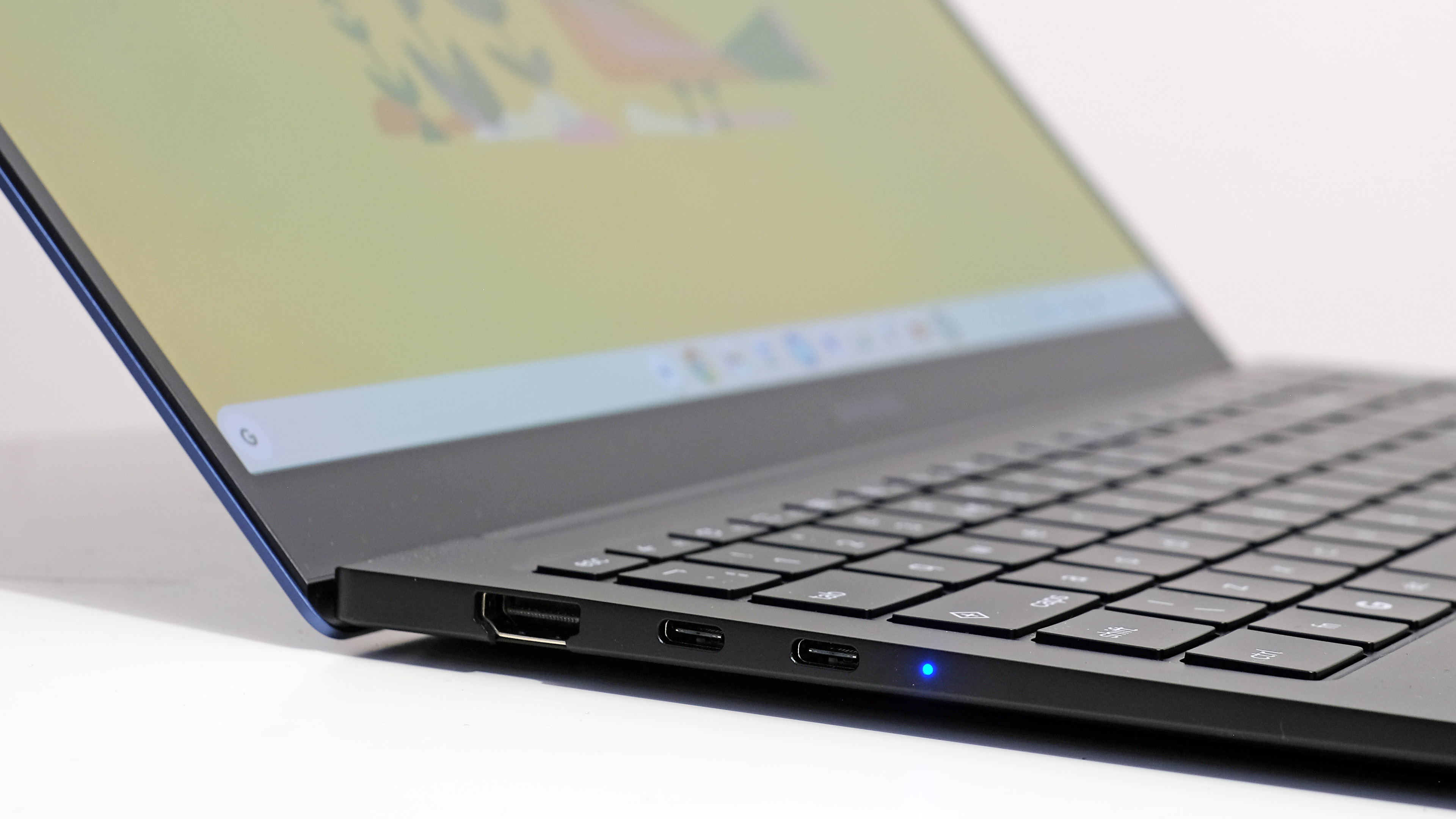
Simplicity, low cost and long battery life. These have been the pillars of Chromebook appeal since the very beginning.
The Samsung Galaxy Chromebook Plus doesn’t have the middle one nailed, but you already knew that. And since the arrival of Intel Ultra 2 and Qualcomm Snapdragon laptops – here's how those two compare – long battery life seems less of an achievement. But you can’t complain too much about the Samsung’s results.
It can last for around 14 hours of video streaming, closer to around 8 hours with mixed use, or 2 hours 20 minutes of intensive gaming. That was playing Subnautica – a game the Samsung can just about play.
The Samsung Galaxy Chromebook Plus’s problem is that Chromebooks are no longer special in having long battery life now we have the Qualcomm Snapdragon and Intel Ultra 2 crowd in town. And they often, in my experience, outlast this Samsung with general work and productivity use.
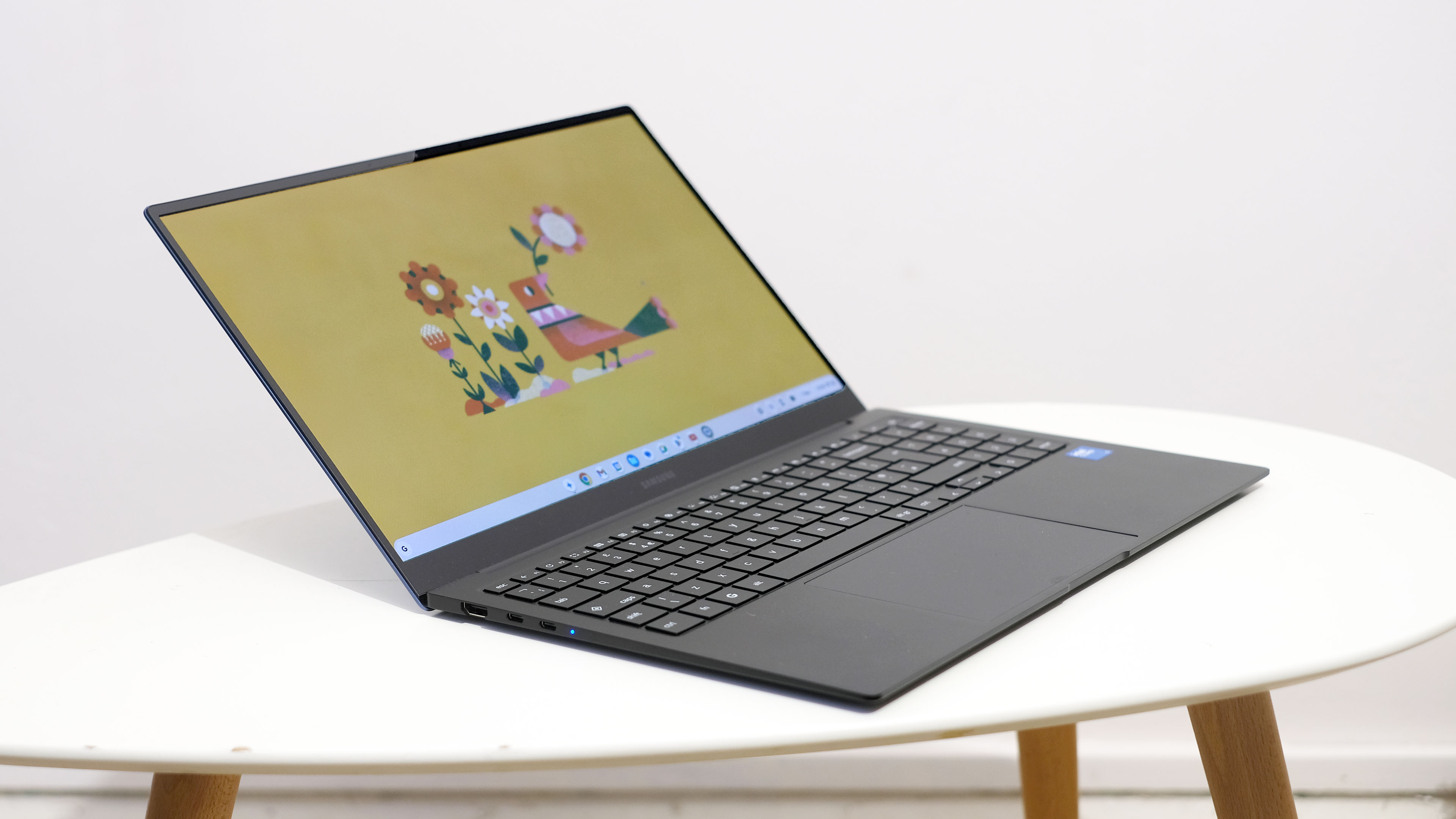
The Samsung Galaxy Chromebook Plus’s connectivity is respectable. You get a decent breadth, including HDMI and microSD, as well as a couple of USB-C ports and an old-school “fat” USB-A connector. Neither of the USB-C is super-fast, but it seems less important in a Chromebook than a Windows PC.
Finishing up, the Samsung Galaxy Chromebook Plus has a pretty puny-sounding pair of speakers. I’ve not been all that impressed by any of the speakers in the recent Samsung Galaxy line-up, but these are pretty weedy.
This laptop does have a respectable webcam, though, as is part of the 'Plus' spec. It’s a 1080p camera, which produces a mostly lifelike image, if one that never quite gets away from dancing image noise despite all the chat about AI (which can be used to good effect in reducing it elsewhere).
Samsung Galaxy Chromebook Plus review: Verdict
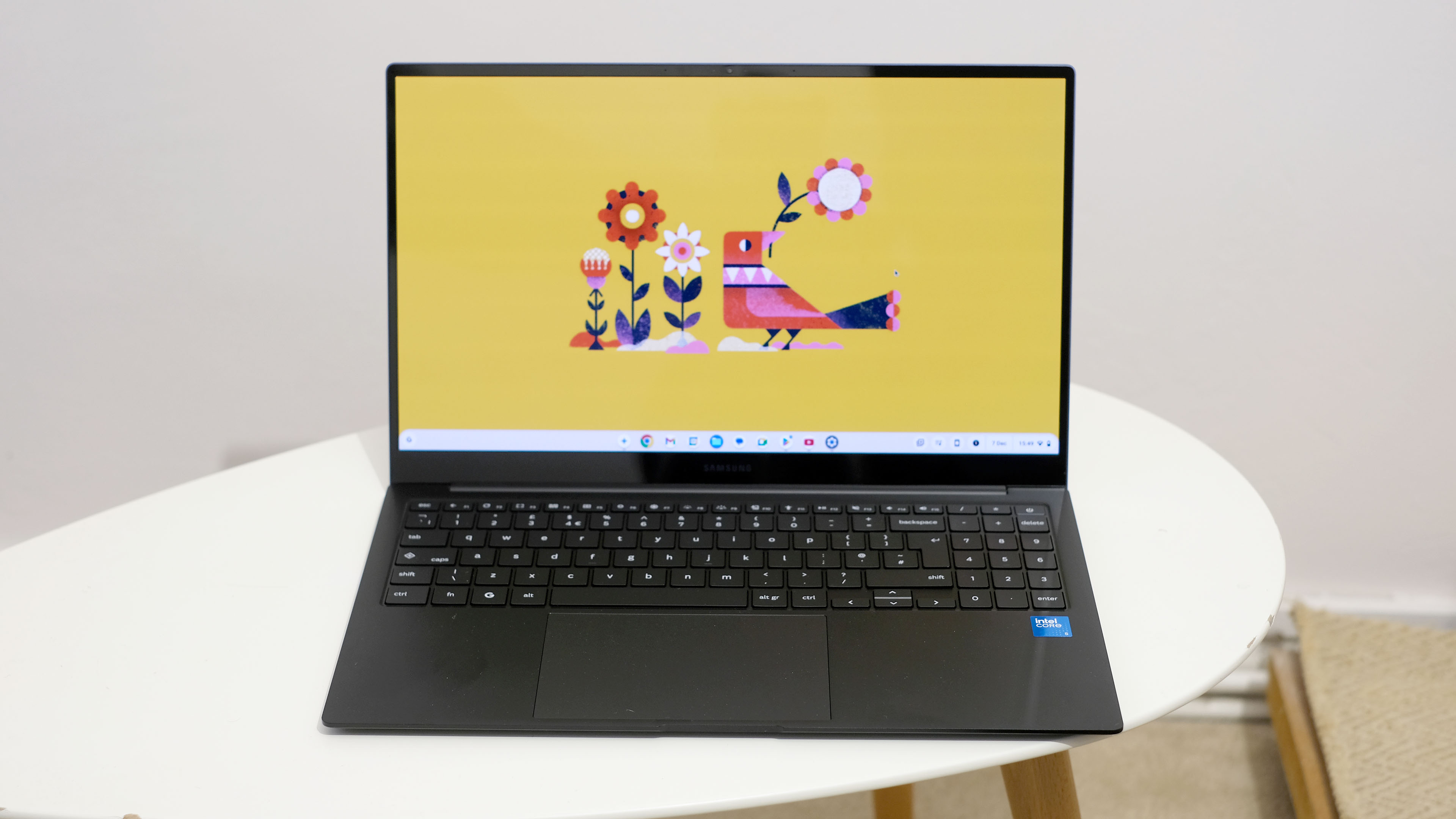
The Samsung Galaxy Chromebook Plus is among the most elegant and impressive-looking Chromebooks. It’s here to do business, even if that business is just to mess around online.
There’s always a question of whether it’s worth investing in a high-price Chromebook when the apps you can use aren’t pro grade, and most aren’t designed for the hardware. But we can’t deny you can absolutely do much of what ordinary folks use laptops for.
Some of the core elements of Samsung’s pricier Windows laptops are present here, too, including a quality (if shallow) keyboard and glass (if overly bright) touchpad.
In today’s laptop world, this Galaxy option will mostly make best sense for folks who actively appreciate how much simpler and more limited Chromebooks are than normal Windows PCs. It looks the business and means it too.
Also consider
The only like-for-like alternatives to the Samsung Galaxy Chromebook Plus are models from the same “Plus” family that tells you these PCs are powerful enough to run Steam.
The Acer Chromebook Spin 14 is similarly priced. It’s not as slick or light (at 1.45kg), and doesn’t have an OLED screen. But it does have the edge for versatility thanks to its 360-degree hinge and stylus support.
But the ones I’m keener to draw your eyes to are cheaper options like the HP Chromebook Plus and Lenovo IdeaPad Slim 3i Chromebook Plus.
The latter in particular provides top draw bang for your buck, with a hybrid hinge, stylus support and a half-decent Intel Core i3 processor. It’s far heavier than the Samsung, at 1.58kg, and not nearly as much a prestige design laptop.
Not wedded to the Chromebook concept? The Samsung Galaxy Book 4 Edge is also worth a look. This Windows PC is more powerful and flexible, and a better deal if you’ll use its skills. But, again, it’s not nearly as light as the Chromebook Plus at around 1.5kg.

Andrew is a freelance tech and entertainment journalist. He writes for T3, Wired, Forbes, The Guardian, The Standard, TrustedReviews and Shortlist, among others.
Laptop and computing content is his specialism at T3, but he also regularly covers fitness tech, audio and mobile devices.
He began writing about tech full time in 2008, back when the Nintendo Wii was riding high and smartphones were still new.
You must confirm your public display name before commenting
Please logout and then login again, you will then be prompted to enter your display name.